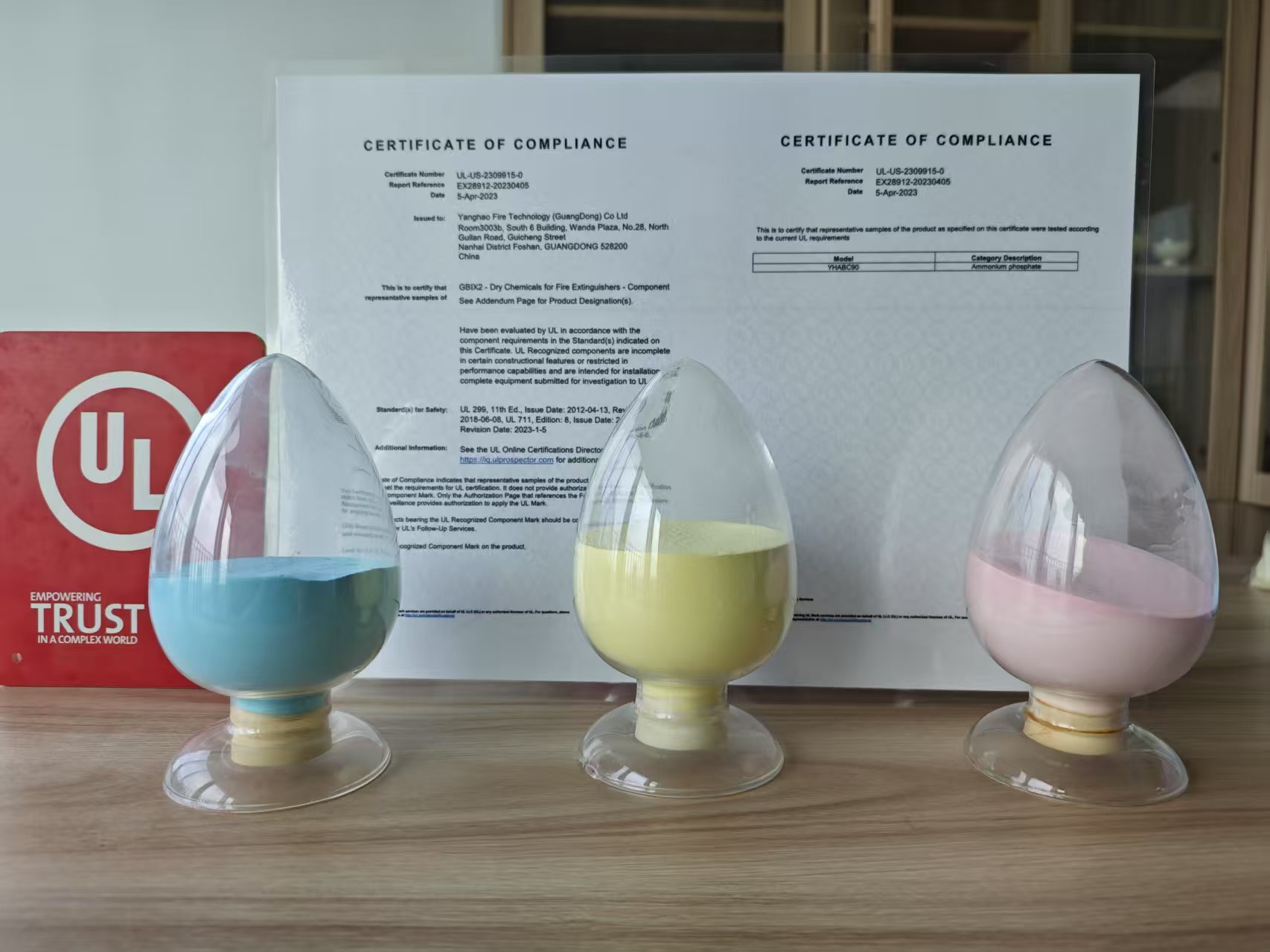Dry Powder Fire Extinguishers: Configuration Requirements and Suitable Applications
Dry powder fire extinguishers are among the most widely used and versatile firefighting tools available today. Known for their efficiency, affordability, and broad range of applications, they are an essential safety device for homes, offices, industrial facilities, and more. This article focuses on dry powder fire extinguishers, detailing their configuration requirements, suitable usage scenarios, and maintenance tips to help ensure proper fire safety measures.
1. Features and Working Principle of Dry Powder Fire Extinguishers
Key Features
Wide Applicability: Effective against Class A (solid), Class B (liquid), and Class C (gas) fires, as well as certain electrical fires.
Ease of Use: Lightweight and portable, available in handheld and larger wheeled models.
Cost-Effective: Generally more affordable than other types of fire extinguishers.
Working Principle: Dry powder fire extinguishers work by discharging a fine powder that blankets the fire, cutting off the oxygen supply and absorbing heat to extinguish the flames. Additionally, the chemical composition of the powder interrupts the chain reaction of combustion.
2. Configuration Requirements for Different Environments
Residential Spaces
Configuration Guidelines: Install one extinguisher in the kitchen and another in the living room, ensuring they are easily accessible.
Avoid placing extinguishers in humid or high-temperature areas.
Recommended Equipment: 2kg or 3kg dry powder fire extinguishers.
Suitable Fires: Solid materials like wood and paper, kitchen grease fires, and electrical fires.
Office Buildings
Configuration Guidelines:Place one extinguisher for every 100 square meters, especially near exits or corridors.Ensure coverage in shared areas like meeting rooms and lobbies.
Recommended Equipment: 4kg dry powder fire extinguishers.
Suitable Fires: Fires involving office equipment, electrical appliances, and furniture.
Industrial Facilities
Configuration Guidelines:High-risk areas, such as welding workshops or chemical storage rooms, should have one extinguisher for every 25 square meters.Use wheeled dry powder extinguishers for larger industrial spaces or high-risk zones.
Recommended Equipment: 6kg or 8kg dry powder fire extinguishers.
Suitable Fires: Combustible solids, flammable liquids, gases, and electrical fires.
Commercial Spaces (Malls and Supermarkets)
Placement Suggestions:
Place extinguishers in key areas like entrances, storage rooms, and near escalators.
Underground parking lots should be equipped with wheeled dry powder extinguishers.
Recommended Equipment: 4kg dry powder or wheeled extinguishers.
Suitable Fires: Flammable liquids, electrical fires, and general fire risks in high-traffic areas.
Transportation Vehicles
Configuration Requirements:
Personal vehicles must carry at least one extinguisher.
Public transportation, such as buses, should comply with national regulations for fire safety equipment.
Recommended Equipment: 1kg to 2kg portable dry powder fire extinguishers.
Suitable Fires: Engine fuel fires, electrical short circuits, and other vehicle fire risks.
3. Advantages and Applications of Dry Powder Fire Extinguishers
Wide Applicability
Dry powder extinguishers are effective against various types of fires.
Class A: Fires involving solid combustibles like wood, paper, and textiles.
Class B: Fires involving flammable liquids such as gasoline, alcohol, and oils.
Class C: Fires caused by flammable gases like propane and natural gas.
Electrical Fires: Thanks to their non-conductive properties, dry powder extinguishers are safe for use on low-voltage electrical fires.
Typical Scenarios
Residential Fires: Kitchen grease fires, electrical fires caused by overheating appliances, and solid combustibles.
Industrial Fires: Chemical spills, gas leaks, and machine malfunctions.
Vehicle Fires: Engine fires or fuel tank leaks in cars, buses, and trucks.
4. How to Use and Maintain Dry Powder Fire Extinguishers
Steps for Proper Use:
Pull the Pin: Remove the safety pin to prepare the extinguisher for use.
Aim at the Base of the Fire: Direct the nozzle at the fire’s base, where the flames originate.
Squeeze the Handle: Press the lever to discharge the dry powder.
Sweep Side-to-Side: Move the nozzle in a sweeping motion to ensure even coverage of the fire.
Maintenance Tips:
Check the Pressure: Ensure the pressure gauge needle is in the green zone.
Avoid Moisture: Store in a dry area to prevent the powder from clumping.
Replace Powder Regularly: Refill or replace the extinguisher every 2–3 years, depending on manufacturer recommendations.
Important Notes:
After use, even if not fully discharged, extinguishers should be refilled by a certified service provider.Clean up dry powder residue promptly to avoid potential damage to sensitive equipment or surfaces.
5. Frequently Asked Questions (FAQs)
Q: Is a 2kg dry powder extinguisher sufficient for home use?
A: Yes, a 2kg extinguisher is typically adequate for small residential spaces. For larger homes, consider additional units or larger models.
Q: Can dry powder extinguishers be used for grease fires?
A: Yes, they are effective for grease fires, but care should be taken to avoid splattering hot oil.
Q: Are dry powder extinguishers safe for sensitive equipment?
A: While they are effective, the powder may leave residues that can damage sensitive electronics. In such cases, consider using a CO2 extinguisher instead.
6. Conclusion
Dry powder fire extinguishers are a reliable and cost-effective solution for fire safety across various environments. Their versatility in combating different fire types makes them an essential tool for homes, businesses, and industrial facilities alike. Proper configuration, regular maintenance, and understanding their application can ensure optimal fire safety measures in case of emergencies.


